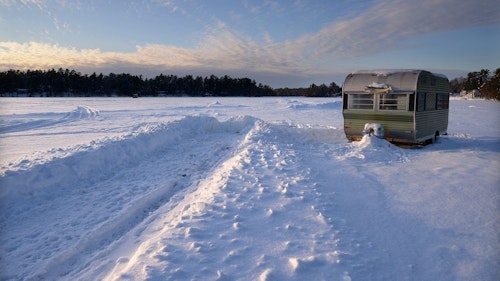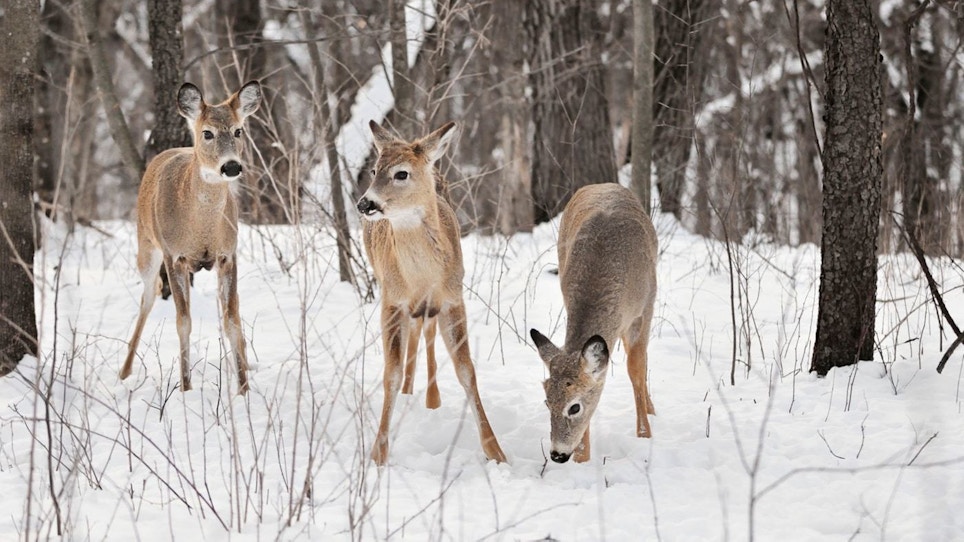Record snowfall in cities including Duluth, Minnesota to Bozeman, Montana present challenges to local deer populations and that includes forecasts that deer will die as the snow piles up.
By February 20, Minnesota’s Twin Cities had already recorded 39 inches of snow, its snowiest February in history with eight days remaining in the month. Omaha, Nebraska not only broke its February record for snowfall totals, but also recorded its snowiest winter (December through February) with 46.1 inches of snow.
In the small town of Rhinelander, Wisconsin, where this publication’s recent ice-fishing series was written from an ice shack on Boom Lake, 61.5 inches of snow fell in February. Compare that total to Jackson, Wyoming’s 52.9 inches of record February snow, or California’s Sierra Nevada and its insane 207 inches of snow. These totals are only a snapshot of the record-setting snow across the country.

While this amount of snowfall presents challenges and, in some cases, threats to the health of each area’s human population, it’s also becoming a serious threat to wildlife including whitetail deer herds.
The Minnesota Department of Natural Resources expects deer mortality to exceed 10 percent in the northern regions of the state. “You can see the deer really struggling to get through the snow. Especially the fawns,” Tom Rusch, area wildlife manager for the state’s wildlife agency, says in an interview with the Duluth News Tribune.
When snow depths are this extreme, deer simply can’t move. They can’t forage freely and their food sources are more limited. Deer herds are also know to “yard” up in extreme winter weather conditions. They’ll seek out sanctuaries where snow depths are less, but those areas become more limited with each snow storm. Still, in Minnesota and Wisconsin, it’s not unusual to see deer migrate to cedar swamps and valley bottoms with conifer cover where they’ll yard for one to three months, moving very little.
“Cedar, hemlock, fir or spruce help shield deer from snow, and it is said that such habitat has 40 percent less snow than hardwood forests,” wrote Dr. Dave Samuel in “How Deer Survive Winter Weather,” an article published by Whitetail Journal.
As Samuel writes, deer lower their energy expenditure during harsh winter weather and, even if there is limited food, their body weight turns around and can start to increase in late winter. The question for deer: do I want to expend more energy to find food and digest it than the energy from the food itself is worth?
There are two factors, however, that can serve as a foil to a deer herd’s instinctive survival response. One is food availability in the fall. If deer go into winter with limited fat stores due to weather patterns like a dry summer, which then leads to limited food availability in the fall, the deer are already compromised heading into winter. The second factor is how long extreme winter weather lasts. These rare winters that linger are the ones that can cause the deer mortality rate to spike.
In Minnesota, Rusch cited the lingering snows as a critical factor. "Even if we say that we're almost done with the extreme cold, the snow we have isn't going anywhere through March or even into early April,'' Rusch told the Tribune.






